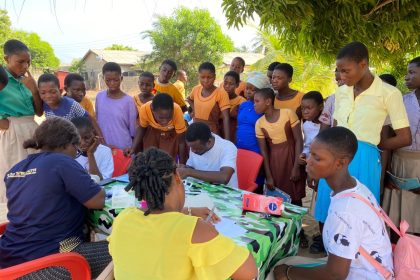About 42 new HIV infections are recorded among the adult and children population in the country every day, the Ghana AIDS Commission (GAC) 2024 National and Sub-National HIV estimates and projections have revealed.
Presently the nation has 334,721 persons living with HIV, comprising 105,460 males representing 31.5 per cent and 229, 261 females, representing 68.5 per cent.
Mr Ahmed Ibrahim Bimbilla, the Bono, Bono East and Ahafo Regional Technical Coordinator of the GAC, revealed the figures and added that HIV estimates data remained critical for planning and understanding the magnitude of the HIV and AIDS epidemic in the country.
In an interview with the Ghana News Agency (GNA) at Sunyani, Mr Bimbilla said the nation’s new HIV infections stood at 15, 290 comprising 4,987 males representing 32.6 per cent and 10,303 females, a representation of 67.4 per cent.
The AIDS-related deaths in the country also stands at 12,614, he stated, adding that 5,445 of the deaths were recorded among males and 7,159 among females, adding that 229 deaths were averted every week due to ART services.
In a breakdown, Mr Bimbilla said the North East Region had the lowest HIV population of 1,717, with the highest population in Greater Accra (77,821), Ashanti (63,159) and Eastern (44,792).
Seven regions recorded an HIV population below 10,000 including Ahafo, Upper East, Northern, Upper West, Oti, Savannah and North East.
Mr Bimbilla said the HIV prevalence remained higher in the Bono Region (2.22 per cent), Eastern (2.08 per cent) and Ahafo (1.88 per cent), adding that the North East Region had the lowest prevalence of 0.43 per cent.
Five regions of Oti, Upper East, Savannah, Northern and North East also had their HIV prevalence below 1.0 per cent, he added.
Mr Bimbilla said Greater Accra, Ashanti and Eastern regions had the highest HIV new infections of 3,436 cases, 2,997 cases and 2,019 cases respectively, with the North East Region having the lowest new HIV infection of 97 cases.
He said 11 regions including Bono Volta, Bono East, Western North, Ahafo, Upper East, Northern, Upper West, Oti, Savannah and North East Regions recorded new HIV infections below 1,000.
On the way forward, Mr Bimbilla said the estimated reduction in HIV prevalence, new infections, and AIDS-related deaths was a positive development that could be attributed to the increased uptake of ART services.
He said the reduction in new infections and AIDS deaths was expected to lead the country to achieve epidemic control and stressed the need to sustain efforts at eliminating HIV and AIDS.
Those efforts include increased awareness, testing, and access to treatment to ensure the country achieved epidemic control.
GNA






